We tested more than 20 water bottles and found something interesting. The right travel water bottle does more than keep drinks at the right temperature—it completely reshapes your travel experience. The best bottles in our tests proved remarkable, as they kept drinks cold for up to 42 hours and hot for 12 hours.
Picking the best reusable travel water bottle can feel overwhelming with so many choices in the market. We took the time to review each travel water bottle based on significant factors such as durability, insulation, and portability. You’ll find the perfect travel companion here, whether you want a simple reusable travel water bottle or a sophisticated option with UV purification.
Table of Contents
Why Switch to Reusable Water Bottles?
My switch to a reusable water bottle has made a huge difference to the environment and my wallet. Let me share what I learned about this simple change that packs quite a punch.
Environmental impact of single-use bottles
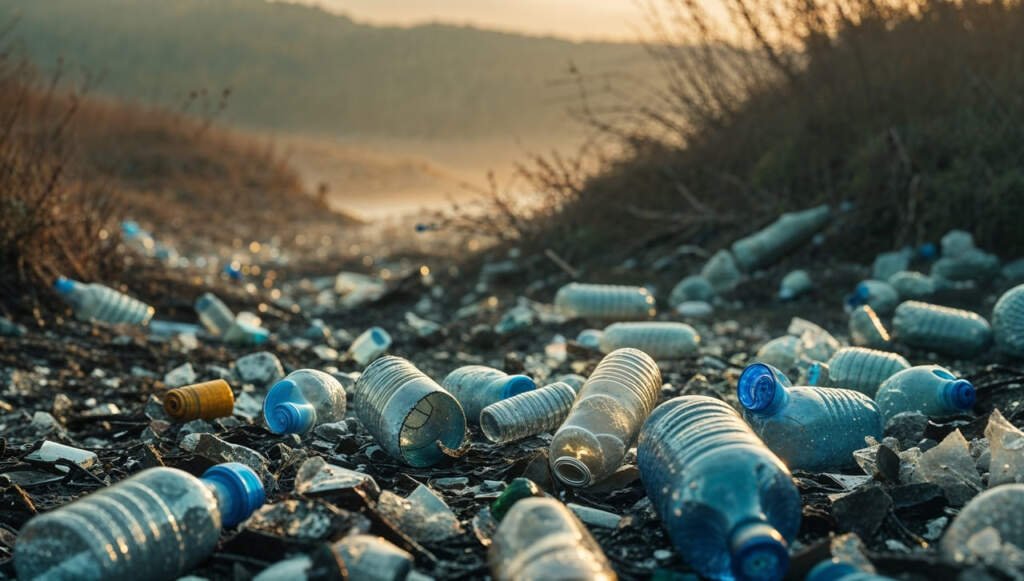
The numbers tell a scary story about our plastic problem. Americans use about 50 billion plastic water bottles yearly, and we throw away 60 million bottles each day. These bottles need over 450 years to break down into smaller plastic pieces.
The recycling situation looks grim. All but one of these bottles end up in landfills or oceans, with just 23% getting recycled. Scientists predict that by 2025, our oceans will have one pound of plastic for every three pounds of fish.
Making these bottles creates its own set of problems. Each plastic bottle needs three times more water than it can hold, and the production process uses nowhere near the energy necessary for tap water—about 2,000 times more.
The problems go beyond waste. A newer study published shows that 93% of bottled waters tested had harmful chemicals and microplastics. These tiny plastic particles don’t just make water quality worse – they’ve spread into marine ecosystems. At least 1,565 wildlife species have eaten plastic by accident.
Cost savings over time
Money talks, and the switch to reusable bottles makes perfect sense. Americans spend about USD 260.00 yearly on water bottles. The savings look even better – you can save around USD 1,300.00 annually by switching to reusable bottles.
Think about this: a good stainless steel water bottle lasts up to 12 years and can save you USD 15,600.00 over its lifetime. Families see big benefits too. A family of four using stainless steel bottles could save USD 62,400.00 over 12 years.
You won’t need much money to start. Most reusable bottles cost between USD 15.00 and USD 50.00. That’s not much when you think about making positive changes. Bottled water costs about 3,000 times more than tap water. Budget-smart travelers know this makes reusable bottles the clear winner.
Top Eco-Friendly Reusable Water Bottle Materials
The material you choose makes all the difference in picking the best travel water bottle. My extensive testing shows that certain materials excel in both benefits and eco-friendly properties.
Stainless steel benefits
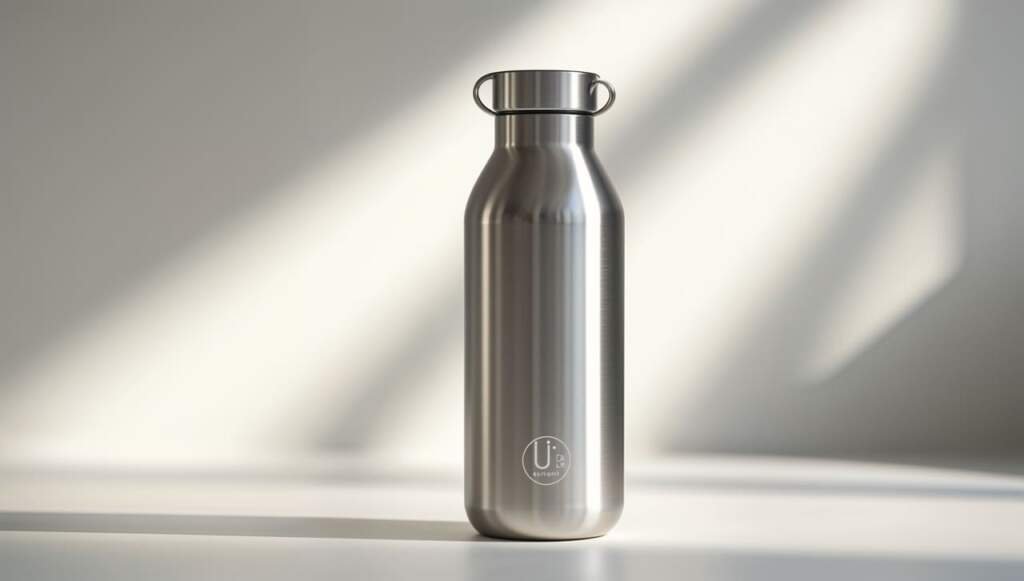
Stainless steel has become my favorite choice for travel water bottles. The 18/8 food-grade stainless steel in premium bottles keeps drinks cold for up to 50 hours and hot for 20 hours. Though you might see small dents, these bottles are tough and durable and won’t get damaged or punctured from drops.
The best part about stainless steel’s non-porous surface is that it stops bacteria from growing and prevents flavors from sticking around. A quick rinse prepares the bottle for a different drink with no taste transfer. Stainless steel bottles use at least 90% recycled materials, which makes them perfect for eco-conscious travelers.
Glass bottle advantages
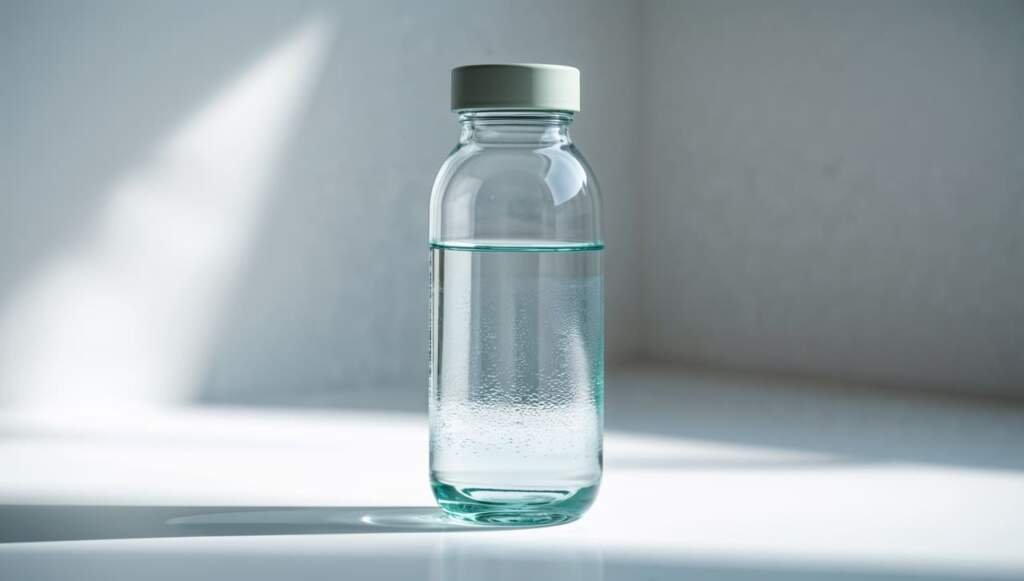
Glass bottles give you the purest taste possible. They stay chemically stable and won’t leak substances into your drinks. The medical-grade borosilicate glass in these bottles handles extreme temperatures well.
Protective silicone sleeves now come with most glass water bottles to guard against impacts and give you a better grip. They weigh a bit more than other options, but you can see exactly what you’re drinking through the crystal-clear material.
Recycled plastic options
Recycled plastic bottles offer a lightweight alternative that has come a long way. Today’s recycled plastic bottles use 100% food-grade recycled plastic (rPET) that meets FDA safety standards. These BPA-free bottles help protect our environment.
A reusable bottle saves about 150 plastic bottles and 450 disposable cups from waste each year. Many manufacturers now use at least 65% recycled materials, including up to 90% recycled stainless steel. This shows the industry’s steadfast dedication to sustainability.
| Brand | Material | Key Feature | Target Use |
|---|---|---|---|
| Nalgene | Recycled Plastic | Lightweight design | Everyday travel |
| Brita | Plastic | Built-in filter | Clean water access |
| Hydro Flask | Stainless Steel | Insulation for temperature | Long journeys |
| Takeya Actives | Stainless Steel | Durable and stylish | Active lifestyles |
| Purist Mover | Glass Interior | Pure taste experience | Taste-focused travel |
Making Your Water Bottle Last Longer
Experience has taught me a vital lesson from testing travel water bottles over the years – your bottle will last longer with the right care. Let me share some practical tips I’ve found through research and hands-on use.
Daily cleaning tips
A clean travel water bottle isn’t just about looks—it’s about staying healthy. The inside of your bottle can become a breeding ground for bacteria that thrive in dark, moist environments. A daily cleaning routine with warm water and dish soap does wonders. Stubborn odors need a simple fix: mix equal parts baking soda and water, then let it soak for 10 minutes.
White vinegar has worked amazingly well for me. I mix ¼ cups with ¼ cups water and leave it overnight. The remaining residue scrubs away easily in the morning. An inexpensive bottle brush helps reach those tricky spots effectively.
Storage recommendations
Your water bottle’s condition depends heavily on proper storage. Before storage, the bottle must be completely dry since trapped moisture creates perfect conditions for bacteria. The lids should stay off during storage.
Trial and error showed me that a designated space helps prevent dents and damage. Stackable organizers or dedicated bottle racks protect your investment while using space efficiently.
| Storage Tip | Benefit | Suitable For |
|---|---|---|
| Cool, dry storage | Prevents material wear | All bottles |
| Avoid direct sunlight | Reduces degradation | All bottles |
| Secure flex chug cap | Prevents leaks | Bottles with cap |
| Self-cleaning | Maintains hygiene | Larq bottle |
| Thorough drying | Prevents mold | All bottles |
When to replace parts
Safe drinking and peak performance depend on timely replacement of bottle components. Look out for these warning signs:
- Odors that stick around after thorough cleaning
- Stubborn buildup in the lid or mouthpiece
- Material cracks that could harbor bacteria
Plastic bottles need replacement for discoloration or persistent odors. Glass and stainless steel bottles typically last several years with good care. Note that regular maintenance prevents most issues, but sometimes, getting a new bottle is the safest option.
Smart Features for Sustainable Travel
Smart technology has changed the way we stay hydrated while traveling. After testing many water bottles, I found that they have a range of features that make sustainable hydration easy and safe.
Built-in filters
My recent backpacking trips showed me how filtered water bottles protect us from contaminants. The best filters I tested remove up to 99.9% of waterborne pathogens. These advanced systems clean everything from microplastics to pesticides, so you can drink safely from any source.
The dual-stage filtration system really stands out. An activated carbon filter removes chlorine and organic chemicals to improve taste, and a membrane microfilter blocks bacteria, parasites, and microplastics. This setup works great when you need to drink from questionable water sources.
UV purification systems
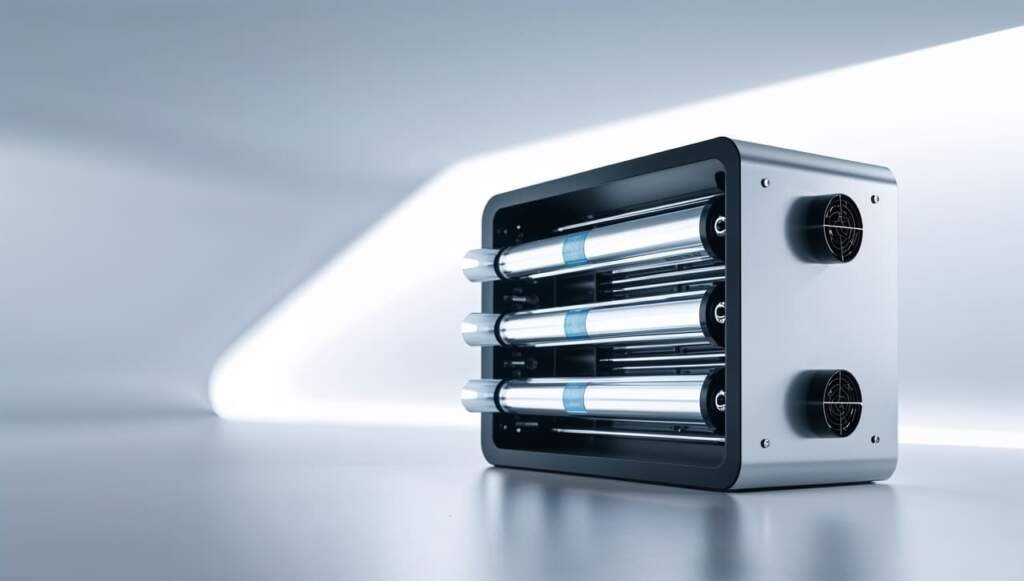
UV-C technology represents one of the most important advances in water bottle design. These systems use UV light at the optimal 280nm wavelength to kill bacteria and viruses. I love their self-cleaning feature—you won’t have to worry about musty smells or bacteria growing inside.
The bottles I tested come with multiple purification modes. To cite an instance, some models offer:
- Normal mode: Eliminates 99.99% of contaminants in 60 seconds.
- Adventure mode: Removes up to 99.9999% of pathogens in 3 minutes.
These bottles turn on automatically every two hours for a quick 10-second cleaning cycle. The UV-C technology runs without chemicals or mercury, making it an eco-friendly choice.
I am amazed at how these smart features work together. Many bottles now combine UV purification with standard filtration methods. Some models use plant-based Nano Zero technology to remove up to 99% of contaminants like lead, PFAS, and their UV systems.
These advances make travel easier and help protect our environment. Each smart bottle can replace hundreds of single-use plastic bottles yearly, making them worth buying for your health and the planet’s well-being.
Final Words
My extensive testing and research of water bottles have shown how switching to reusable bottles creates a lasting impact. These innovative containers do more than maintain drink temperatures—they protect our oceans, save money, and preserve our planet.
Stainless steel bottles provide the perfect mix of durability and performance, while glass bottles excel in taste purity. UV purification and built-in filters have turned these simple containers into indispensable travel companions. The technology delivers results—because of these advances, I’ve safely drunk from mountain streams and questionable taps worldwide.
The numbers paint a compelling picture. A quality reusable bottle saves USD 1,300.00 yearly and prevents hundreds of plastic bottles from polluting our oceans. This savings could fund a weekend getaway while protecting marine life and reducing plastic waste.
The evidence points to one conclusion—reusable water bottles are a small change with powerful benefits. By choosing either a simple stainless steel bottle or one with advanced filtration, you’ll make a smart investment in your health and the future of our environment. Note that the best water bottle is the one you use daily.
FAQs About Reusable Travel Water Bottles
What Are the Benefits of Using a Reusable Travel Water Bottle?
A reusable travel water bottle reduces plastic waste, saves money, and ensures clean water on the go. Many are insulated, leak-proof, or have built-in filters, making them perfect for travel.
How Do I Choose the Best Reusable Travel Water Bottle?
Pick based on material, size, and features. Stainless steel is durable, glass is clean-tasting, and recycled plastic is lightweight. Add-ons like filters or UV purification enhance convenience.
Can I Take My Reusable Travel Water Bottle on a Plane?
Yes, but it must be empty during security checks. To stay hydrated eco-consciously, refill it afterward at water stations or cafes.
How Do I Keep My Reusable Travel Water Bottle Clean?
Wash daily with warm, soapy water and air-dry with the lid off. Use baking soda and vinegar for deep cleaning to prevent odors and mold.
References
- https://cleanwater.org/2023/07/10/reusable-water-bottles-understanding-reasons-why-use-them
- https://case.edu/sustainability/news/making-switch-reusable-bottles
- https://www.intelligentliving.co/durability-longevity-custom-water-bottles/
- https://www.sustainablejungle.com/eco-friendly-water-bottles/
- https://www.drinkartesian.com/benefits-of-stainless-steel-water-bottles/
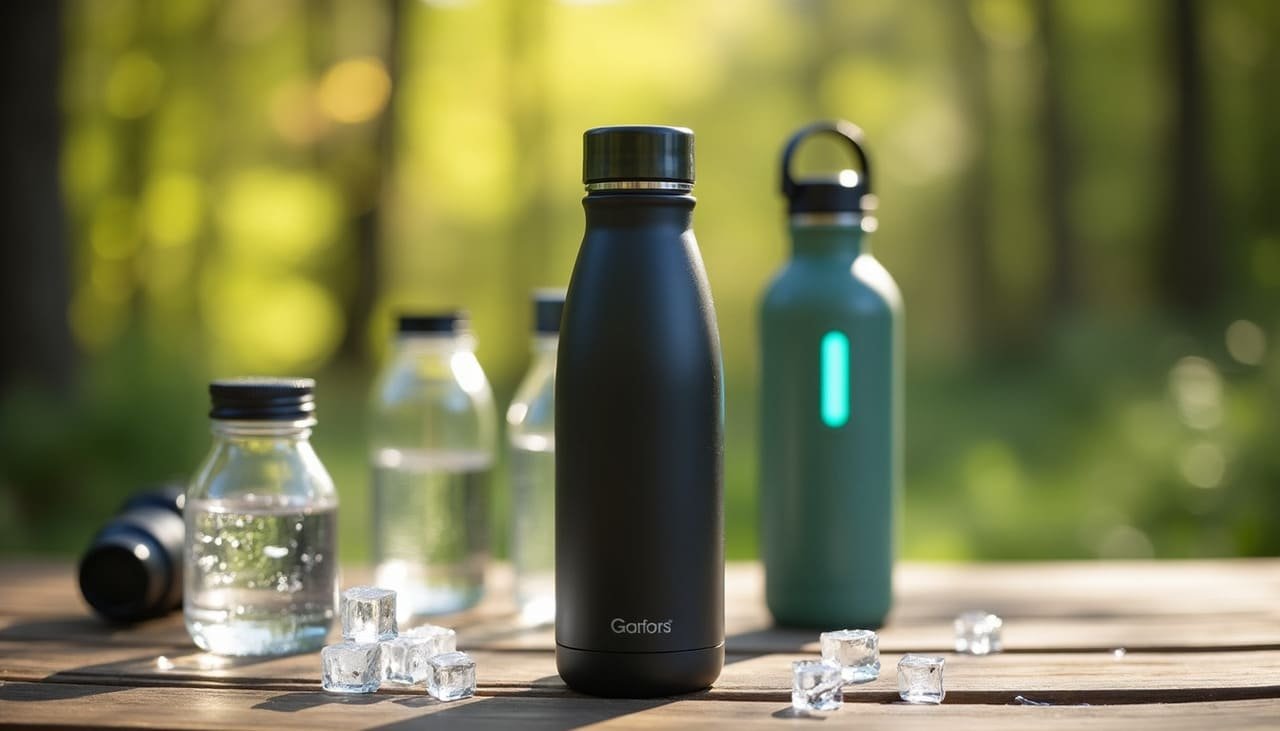

Leave a Comment